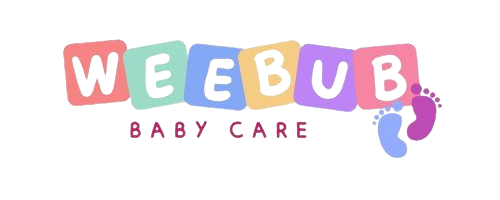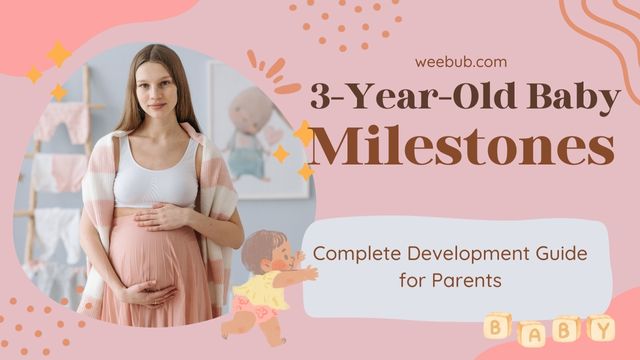Introduction
Watching your little one grow from a toddler to a more independent 3-year-old is one of parenting’s most rewarding experiences. At this magical age, children undergo remarkable transformations in their physical, emotional, cognitive, and social development. This comprehensive guide will help you understand what to expect from your 3-year-old’s development milestones and how to provide the best care and support during this crucial stage.
Social and Emotional Development: Building Relationships and Understanding Feelings
Interacting with Peers (दोस्तों के साथ खेलना)
Your 3-year-old is now showing genuine interest in other children and may actively seek to join them in play. This is a significant step from parallel play to cooperative play. Key developments include:
- Sharing and Turn-Taking: While still challenging, your child begins to understand the concept of sharing toys and taking turns during games
- Group Play: Shows enthusiasm for group activities and may initiate play with other children
- Social Rules: Starts learning basic social rules like saying “please” and “thank you”
Parenting Tip: Organize regular playdates and encourage group activities to help develop these social skills naturally.
Emotional Expression and Regulation
At 3 years old, children display a much wider range of emotions and are learning to express them more appropriately:
- Emotional Vocabulary: Can name basic emotions like happy, sad, angry, and excited
- Tantrum Management: While tantrums may still occur, they often become less frequent and intense as emotional regulation improves
- Empathy Development: Shows concern when others are hurt or upset
- Mood Swings: May experience rapid emotional changes as they learn to process complex feelings
Care Strategy: Help your child name their emotions by saying things like, “I see you’re frustrated because you can’t reach that toy.”
Growing Independence (आत्मनिर्भरता)
Three-year-olds often display increased confidence and independence:
- Separation Comfort: More comfortable being apart from parents for short periods
- Helper Mentality: Enjoys helping with simple household tasks like putting toys away or setting the table
- Decision Making: Wants to make simple choices about clothes, snacks, or activities
- Self-Care: Shows interest in dressing themselves and personal hygiene
Language and Communication Development: The Talking Stage
Vocabulary Explosion
The language development at 3 years is truly remarkable:
- Word Count: Uses several hundred words in daily conversation
- Sentence Structure: Speaks in sentences of 3-5 words, sometimes even longer
- Grammar Understanding: Begins using basic grammar rules, though mistakes are normal
- Storytelling: Attempts to tell simple stories about their experiences
Comprehension and Following Instructions
Your child’s understanding abilities expand significantly:
- Prepositions: Understands concepts like “on,” “under,” “beside,” and “behind”
- Comparisons: Grasps concepts of “same” and “different,” “big” and “small”
- Multi-Step Instructions: Can follow two or three-step directions like “Put on your shoes, get your coat, and come to the door”
- Abstract Concepts: Beginning to understand time concepts like “after lunch” or “tomorrow”
The Question Phase (सवाल-जवाब का दौर)
Be prepared for endless questions! Your 3-year-old frequently asks:
- “What” questions: About objects and activities they see
- “Who” questions: About people in their environment
- “Where” questions: About locations and directions
- “Why” questions: Showing growing curiosity about cause and effect
Parenting Approach: Answer questions patiently and ask questions back to encourage thinking and conversation.
Speech Clarity and Communication
- Understandability: Speech is generally understood by familiar people most of the time
- Stranger Communication: Increasingly understood by people outside the family
- Stammering: May occasionally stammer as language skills develop rapidly
- Personal Information: Can say their first name and sometimes their age
Cognitive Development: Learning and Problem-Solving
Problem-Solving Skills
Three-year-olds approach challenges with determination:
- Trial and Error: Uses experimentation to figure out how things work
- Persistence: Shows increased ability to stick with difficult tasks
- Logical Thinking: Begins to understand cause and effect relationships
- Planning: Can think ahead for simple activities
Memory Development
- Story Recall: Remembers parts of familiar stories and can fill in missing words
- Song Memory: Learns and remembers simple songs and rhymes
- Routine Memory: Understands and remembers daily routines
- Event Recall: Can talk about recent experiences and activities
Learning Through Play
- Matching and Sorting: Successfully matches and sorts objects by shape, color, and size
- Pattern Recognition: Begins to recognize simple patterns in games and activities
- Concept Understanding: Starts grasping abstract concepts like time (morning, night) and opposites
- Creative Thinking: Shows original thinking in play and problem-solving
Imagination and Pretend Play (कल्पनाशील खेल)
The imaginative capabilities of 3-year-olds are extraordinary:
- Role Playing: Acts out different characters and scenarios
- Imaginary Friends: May develop relationships with imaginary companions
- Adult Imitation: Copies adult behaviors in play situations
- Creative Storytelling: Makes up stories with toys and props
Encouraging Imagination: Provide open-ended toys like blocks, dress-up clothes, and art supplies to fuel creativity.
Movement and Physical Development
Gross Motor Skills (बड़ी मांसपेशियों का विकास)
Physical abilities expand dramatically at age 3:
- Running and Jumping: Runs confidently and jumps with both feet
- Stair Navigation: Walks up and down stairs, sometimes alternating feet
- Tricycle Riding: Can pedal a tricycle with coordination
- Hopping: May hop on one foot for short periods
- Ball Skills: Throws a ball overhand with improved accuracy
- Balance: Shows better balance during physical activities
Fine Motor Skills (छोटी मांसपेशियों का विकास)
Hand-eye coordination and dexterity improve significantly:
- Drawing Skills: Can draw circles and may copy simple shapes like squares
- Human Figures: Draws people with at least a head and one other body part
- Scissors Use: Can use child-safe scissors with supervision
- Threading: Can string large beads or similar objects together
- Eating Skills: Uses a fork effectively and may attempt using a spoon properly
- Dressing: Can put on loose clothing items like pants or jackets independently
Essential Care Tips for 3-Year-Olds
Daily Care Routines (दैनिक देखभाल)
Sleep Schedule: Maintain consistent bedtime routines with 10-12 hours of nighttime sleep plus a possible afternoon nap.
Nutrition: Offer balanced meals with:
- Fresh fruits and vegetables
- Whole grains
- Lean proteins
- Dairy products
- Limit sugary snacks and processed foods
Hygiene Habits:
- Regular handwashing
- Teeth brushing twice daily
- Bath time as part of daily routine
- Teaching personal hygiene independence
Safety Considerations
- Supervision: Still requires adult supervision, especially around water, stairs, and potentially dangerous objects
- Car Safety: Must use appropriate car seats or booster seats
- Home Safety: Continue childproofing efforts, especially for curious explorers
- Outdoor Safety: Teach basic safety rules for playground and outdoor activities
Supporting Development
Reading Together: Read daily to expand vocabulary and comprehension skills.
Active Play: Provide opportunities for both indoor and outdoor physical activities.
Creative Activities: Offer art supplies, building toys, and dress-up materials for imaginative play.
Social Opportunities: Arrange playdates and group activities to develop social skills.
Important Considerations for Parents
Individual Differences (व्यक्तिगत अंतर)
Remember that every child develops at their own unique pace. These milestones are general guidelines, and variations are completely normal. Some children may excel in certain areas while taking more time in others. Celebrate your child’s individual progress and avoid comparing them to other children.
When to Seek Professional Advice
While development varies widely, consult with your pediatrician if you notice:
- Speech Concerns: Significant delays in language development or loss of previously acquired speech skills
- Motor Skills: Difficulty with basic movements like walking, running, or using hands for simple tasks
- Social Interaction: Lack of interest in playing with other children or extreme difficulty with social situations
- Behavioral Issues: Persistent aggressive behavior or extreme difficulty with emotional regulation
- Regression: Loss of skills that your child previously had mastered
Creating a Supportive Environment
Patience and Encouragement: Provide plenty of positive reinforcement for efforts, not just achievements.
Consistent Routines: Maintain predictable daily schedules to help your child feel secure.
Learning Opportunities: Turn everyday activities into learning experiences through conversation and exploration.
Quality Time: Spend focused, uninterrupted time with your child regularly.
Conclusion
The third year of life is filled with incredible growth and discovery. Your 3-year-old is developing into a unique individual with their own personality, preferences, and capabilities. By understanding these developmental milestones and providing appropriate care and support, you’re helping your child build a strong foundation for future learning and growth.
Remember that parenting a 3-year-old requires patience, consistency, and lots of love. Celebrate the small victories, embrace the challenging moments as learning opportunities, and enjoy this wonderful stage of your child’s development. Every child is special and will reach these milestones in their own time and way.


